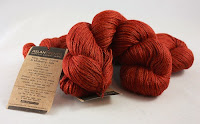 Has this happened to you?
The front and back of a sweater, or the two sleeves are different lengths?
Or, proud to have finally completed that pair of socks only to discover that
one is longer than the other. Sure it
has, come on, admit it.
Has this happened to you?
The front and back of a sweater, or the two sleeves are different lengths?
Or, proud to have finally completed that pair of socks only to discover that
one is longer than the other. Sure it
has, come on, admit it.
It has happened to all of us at one time or another. Why? Probably
because we measured once, and now we get to knit twice. Otherwise, find someone that has one arm longer
than the other and give the sweater to them.
We need to measure many things in knitting, not just the length. For example, we measure our bodies, the size
of our needles, and the gauge of our knitted fabric. Notice I said “knitted fabric” instead of
swatch. I must admit, sometimes I am so
excited to start a new project that I start knitting, then do the gauge
measurement. When it’s off, I cuss a
little, rip it out, change my needle size, and swatch like I should have done
in the first place. Perfect example of
measure once, knit twice.
Recently, I discovered yet another metal gauge ruler in my
many tool bins, and thought to myself, “I wonder how many I have”? So I collected my knitting measuring devices
together and realized that I have a bit of a tool stash.
Interesting point about the 4mm needle sizing, gauges
typically say either 4mm or 4 1/4mm, but the white plastic one that I have, has
both sizes. The purple KnitPicks ruler
has a magnifier, which is very helpful when trying to count stitches for gauge,
while the Susan Bates metal ruler has a 2”x2” gauge cut out.
With all these rulers at my disposal, I tend to carry one of
the metal 6” gauge rulers, and my 36” Four-Fold Rule in my
knitting bag. That is the politically
correct term for what used to be called a Blindman’s Rule; named for the large
numbers which make is easier to read. I
must say, I do like the large numbers.
It also requires that you have your work on a flat surface to measure; always
a good practice. I only use the
measuring tape when measuring body parts or around corners. I highly recommend getting a buddy to do the
body measurement; it’s a lot more accurate than you can do on yourself. You can do the corner by yourself, sometimes.
When the work is longer than 36”, like an
afghan or warping the Knitters Loom, I pull out the big gun. Yup, the 16’ retractable measuring tape.
I was recently introduced to another tool
for measuring gauge … The Swatch Ruler.
It sticks to the fabric so you can easily count your stitches and
rows. If it only had a magnifier, I
would be all over it and add it to the collection.
One perplexing measurement that I find when knitting, is the
button band. Patterns often state, “knit
until slightly stretched, measures the front”.
I have yet to figure out how much stretch is considered slightly. This, I do not measure. Instead, I count rows. Better yet, knit the band with the front
pieces. That way, there is no guessing
or counting. I also count rows for my
socks, sleeves, fronts to backs, etc.
Whenever two pieces are supposed to be the same length, I count
rows. That sounds a bit anal retentive,
but it works. Now, if I could only
remember to write down the count from the first item before starting the
second. That way, when my husband starts
talking about the temperature or expected snowfall, I will have a reference
point and not have to start over.
The term “Measure Twice, Cut Once” is generally associated
with the carpentry trade, but in a figurative sense, it also applies to
knitting. An excerpt from the Historically Speaking website states that the
term can also be meant as a warning to
plan and prepare for something in a careful, thorough manner before taking
action. So let’s make this our
knitting mantra, Measure Twice, Knit Once!
If you diligently measure twice and still find that one
sleeve is longer than the other, then you have no one else to blame. It must have been the wine.











